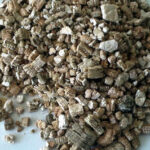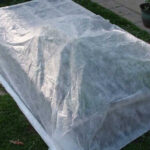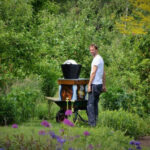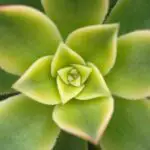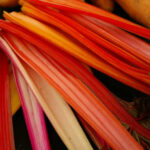Piper nigrum, the peppercorn plant or black pepper plant, is a very interesting tropical vine. While it is only perennial in very warm climates (USDA zone 12+), the black pepper plant is often grown as an annual in the southernmost parts of the US. It can sometimes be brought inside to overwinter in a warmer location, although it may take quite a bit of space!
With every single savory recipe recommending the use of both salt and pepper (or at least it seems that way), pepper is a ubiquitous spice in most cooking. We go through literal tons of peppercorns every year in the US alone. There are different varieties used for cooking, like Malabar and Tellicherry, and it seems that no meal is complete without them.
There are records of black pepper in ancient Greek and Roman texts. However, it gained popularity during the 15th century when the Portuguese explorer Vasco De Gama located it growing on the shores of India. It became an important part of the ensuing spice trade. It was often referred to as “black gold” or “the king of spices.” The Greeks used it medicinally, and today it is understood to have anti-inflammatory properties.
Quick Care Guide
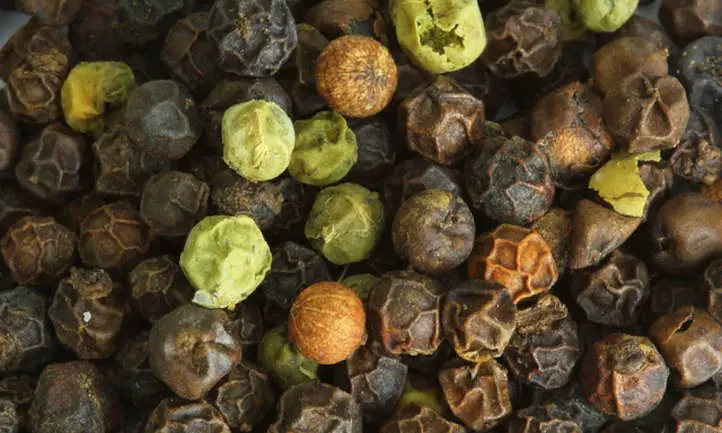
| Common Name(s) | Black peppercorn, black pepper plant |
| Scientific Name | Piper nigrum |
| Days to Harvest | Can take up to 4 years to flower and produce fruit |
| Light | 6 hours of direct sunlight per day |
| Water | Keep soil moist, but not waterlogged |
| Soil | Well draining soil |
| Fertilizer | Balanced 10-10-10 fertilizer |
| Pests | Flea beetles |
| Diseases | Root rot |
All About The Peppercorn Plant
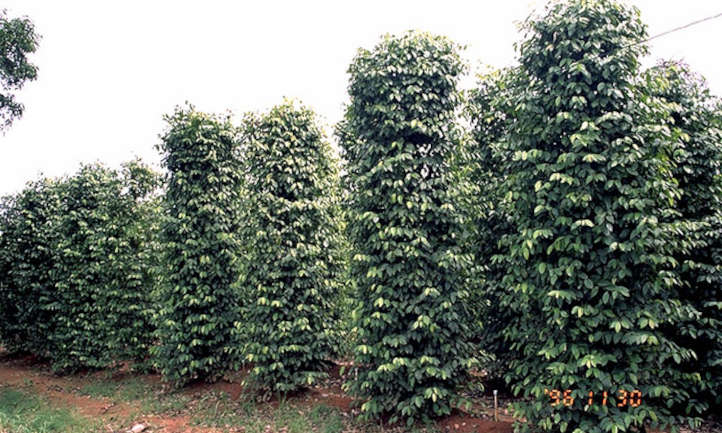
Piper nigrum is the botanical name for the plant also known as black peppercorn, black pepper, or black pepper plant. Black pepper plants originated in South India and are extensively cultivated there and in other topical regions such as Brazil, Myanmar, and Indonesia. It is one of the most commonly grown spices in the world! The black pepper plant grows as a vine with small, dark green, heart-shaped leaves. It will produce pendulous spikes that then flower and eventually turn into clusters of small peppercorns.
Since the black pepper plant prefers warmer temperatures year round, it is grown as a perennial in its native habitat. In other parts of the world, it can be grown as an annual. If you’re interested in growing your own spices, then black pepper should definitely be considered worthy of some space in your garden.
Planting Piper Nigrum
It is best to transplant young plants in the spring when the soil is warm and all threat of frost has passed. Plant in an area that gets full sun, ideally with afternoon shade during the hottest part of the day. The black pepper plant can also be grown in pots (or grow bags, like Root Pouch’s 5 and 10-gallon bags) and brought inside during the winter or grown indoors completely. Planting your own black pepper plants from transplants is the best option since growing from seed will require approximately four years before it reaches the fruiting stages.
Caring For Peppercorn Plants
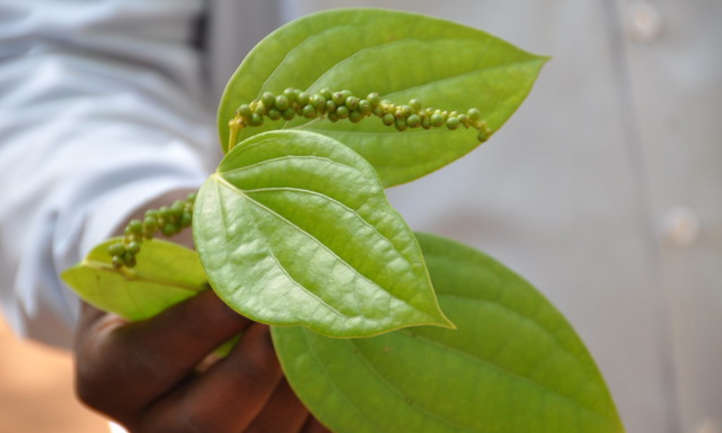
Plant care requirements for the black pepper plant are very specific. When these growing conditions are met, you’ll be rewarded with a harvest of your very own black pepper!
Sun and Temperature
Black pepper plants prefer warm temperatures and full sun to partial shade. 6 hours of direct sunlight per day with afternoon shade during the hottest part of the day is ideal. These tropical plants can be grown outdoors in the USDA hardiness zone 12. They do best in high-humidity areas with temperatures ranging between 75-85 degrees Fahrenheit.
Like other tropical plants, the black pepper plant is highly sensitive to frost and freezes. For this reason, it’s grown as an annual in most parts of the United States since it cannot survive the winter months. However, growing a black pepper plant indoors is also possible. When considering indoor cultivation, it’s important to choose an east or west window with the brightest light possible. This makes it easier for your plant to access the sun’s energy.
The flowering vine of the black pepper plant will also need a large pot with some sort of staking or support structure to climb up. Although in its natural habitat it can grow quite tall, when grown indoors, it can be pruned and kept in check. There is a third option available if you’d like to grow your own black pepper plants. Aside from growing outdoors or indoors, they can also be grown in a greenhouse where gardeners can keep the soil warm.
This is probably the best option because it will give you greater control over the humidity levels and overall temperature. It’s important to remember that the black pepper plant will stop growing when temperatures drop below 65 degrees Fahrenheit. For this reason, if you are growing outdoors, wait until daytime temperatures are above 70 degrees and nighttime temperatures don’t drop below 60 degrees Fahrenheit.
Water and Humidity
When growing black pepper plants outdoors, water early in the day before the heat rises. Keep the soil moist, but be mindful not to overwater as this can cause fungal issues that may kill off the roots. Allow the soil surface around your pepper plant to dry completely before watering again.
When growing in a container, bottom watering is a great way to reduce the risk of overwatering. Place the pot in a saucer filled with water once a week. This will also increase the humidity surrounding the plant. Peppercorns prefer about 50% humidity. Plant-specific humidifiers can be purchased to help you achieve this.
Soil
As mentioned above, overwatering peppercorns can cause issues. For this reason, they prefer soil with good drainage. A loamy mix that is high in organic matter is ideal. Peppercorn can be quite needy when it comes to nutrition and water requirements, so having a soil mix that stays evenly moist but not waterlogged is key to growing a healthy plant. Extra organic matter, like compost, will help retain moisture if you’re having issues with drying out too quickly. This is not a plant that can survive poor soil conditions.
Black pepper plants also require a slightly acidic soil mix with a pH range between 5.5-6.5, which is a similar range required for blueberries. The same soil acidifiers used for these fruits and flowers, such as hydrangeas and azaleas, can be used to lower the pH of your soil to this range as well. The soil in the ground can be acidified, but it is much easier to control the pH of soil in a container which is something to consider when choosing how to grow your black pepper plant.
Fertilizing Black Pepper Plant
Peppercorns are considered light feeders. In the spring, they can be provided with a fertilizer meant for blooming plants. These tend to have an NPK of 7-9-5. They can also be fertilized like this every 2 weeks during the summer. This will encourage the production of the blooms, which then turn into the peppercorn itself as it fades and grows black. Although they resemble a small berry, peppercorns are actually considered a drupe which is more closely related to stone fruit. Fertilizing is not necessary during the fall and winter months.
Pruning Black Pepper Plants
This woody perennial flowering vine can grow up to 30 ft long if left unchecked! However, most often gardeners will choose to prune this plant. Pruning back the main growth point at the leaf nodes will encourage the production of lateral shoots, resulting in even more flowers that grow off the side shoots looking like pendulous spikes. As the flower spikes fade, they grow black, revealing fresh corns.
It’s best to prune about 6 months into the growing season as this is when the flowers will begin to set. In areas where this plant is grown in a perennial garden, it can also be pruned back aggressively in the winter and it will push out new growth in the spring. As regular maintenance of the plant, prune away any dead, damaged, or diseased leaves throughout the season.
Black Pepper Propagation
Black pepper plants can be started from seeds. However, they are slow growing and can take up to 4 years before they will produce flowers and set fruit. For this reason, the preferred method of growing black pepper is from started plants that are already established.
You can also grow black pepper plants via cuttings. These plants will naturally set roots wherever the vine touches the ground which makes it very easy to get cuttings to take root in your garden. If you happen to have a friend who likes to grow black pepper, then this may be a viable option for you to begin growing black pepper!
Harvesting and Storing
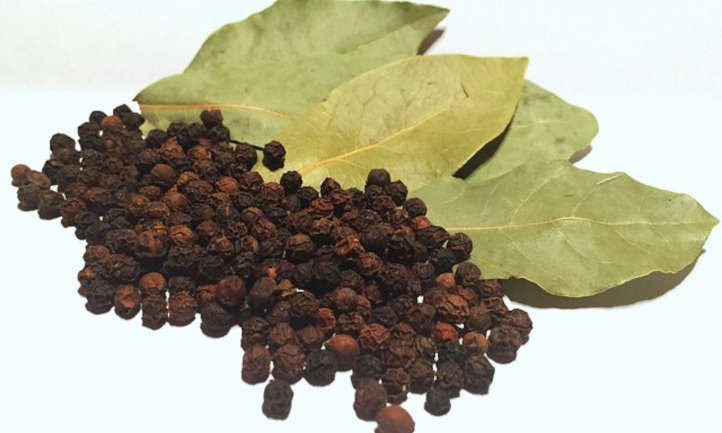
Many choose to grow black pepper to gather a harvest of the seeds themselves. Now that we’ve discussed peppercorn plant care let’s discuss the best harvesting practices and storage techniques to ensure your harvest does not go to waste!
Harvesting
Despite their contrasting appearances, black, white, green, and red peppercorns are all the same peppercorns! Black peppercorns are mature, dried fruit. These fruits will start green, then blush and turn red, and finally, they will grow black after they are picked and left to dry. White peppercorns are the inner portion of mature dried fruits. Black pepper is left to soak in water for days at a time, and then the outer husk is peeled away to reveal white pepper.
Green peppercorns are immature fruits that taste more earthy and citrusy than when left to mature. They can be harvested immaturely, dried, and also produce green pepper! Pink peppercorns come from the Peruvian pepper tree, which is not the same as Piper nigrum. Once you have harvested your peppercorns, prune back the spent spikes to encourage more flower production.
Storing
After harvesting from your garden, regardless of what stage (green or red), the peppercorns must be quickly blanched in boiling water to clean the exterior before drying. Once the peppercorns are fully dried, then they can be stored. If you’d like to save your seeds for future plantings, skip this blanching process as this will sterilize the seeds, and they will not produce more pepper plants.
Whole peppercorns retain their flavor the longest, so storing them this way will give your harvest longevity. Grinding pepper should be reserved for just before you choose to utilize it. Pre-ground black pepper begins to lose its flavor at about 4 months because of its increased surface area and increased exposure to sunlight, oxygen, and moisture. It can even take on a bitter flavor.
Store whole peppercorns harvested from your garden in an airtight container away from direct sunlight, such as in a pantry. If you have harvested fresh green peppercorns and chosen to pickle them, they will last for one month after opening and will need to be stored in the refrigerator.
Troubleshooting
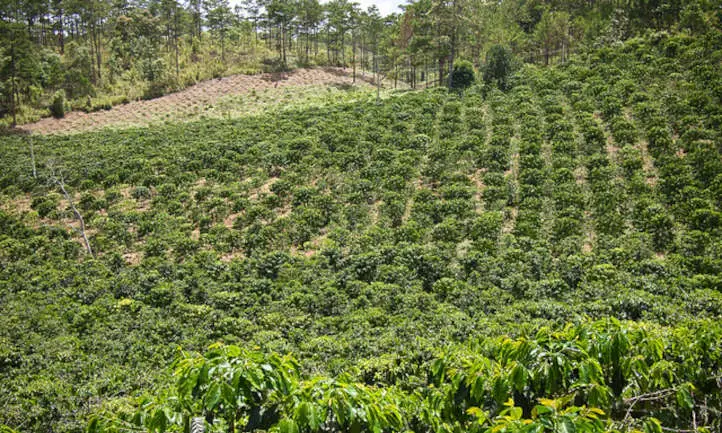
Some issues could drastically reduce the chance of bringing your pepper plant to the point of fruiting. To maximize your chance of reaping a harvest to add to your own food, let’s discuss a few troubleshooting topics.
Growing Problems
Most growing problems are related to poor soil conditions. If you notice lackluster growth or browning of the leaves, then this could indicate insufficient soil ph levels. Soil test kits can be purchased at most big box stores and used to give an idea of whether or not this is the issue. Soil acidifiers are readily available at these stores as well, should you need to lower the ph of the soil. Follow the instructions on the back of the bag, indicating the necessary ratio of acidifier to add to your soil.
When growing in containers, plants can also sometimes become root bound. Symptoms of a bound plant include yellow and brown leaves, new growth that wilts quickly, or stunted growth. If you suspect this is the case, repot your plant into a larger container. If the roots have begun to spiral around themselves, gently tease them when transplanting.
Pests
If you notice ragged, uneven holes chewed into the leaves of your black pepper, then you may have a flea beetle issue. These small, black jumping beetles can decimate foliage if the infestation is left unchecked. Tachinid flies and certain parasitic wasps are the natural predators of this beetle, and in a balanced ecosystem, they generally show up shortly after the beetles to feast on them. If human intervention is required, they can be controlled with the application of neem oil. They can also be deterred by intercropping with thyme and mint as these beetles are repelled by the strong scents of these plants.
Diseases
As mentioned above, root rot is the most common disease affecting black pepper plants. For this reason, it is better to underwater rather than overwater this plant to avoid creating the perfect conditions for this fungal infection to take hold. Especially if you have chosen to grow indoors. Container-grown plants can easily become waterlogged. The symptoms of rot will appear as a soft mushy stem, wilting, and of course, rotten roots. This type of rot is harder to recover from but can be remedied if there are still fresh, white roots that have not yet turned to mush. Cut back the rotted roots and replant the pot into dry soil.
Frequently Asked Questions

Q: Can you grow peppercorns in the US?
A: Yes, although plant care for this tropical plant will likely need to be grown as an annual unless you’re able to move it indoors in the winter. These are warm-loving plants.
Q: Where do peppercorn plants grow?
A: This peppercorn grows in tropical regions such as southern India and other tropical regions of Southeast Asia.
Q: Can you grow a pepper plant from peppercorns?
A: Yes, the peppercorn itself is the seed and will grow into new plants. However, you cannot grow a pepper plant from the peppercorns you buy at the grocery store as they undergo a quick blanching process that essentially sterilizes the seeds. You’ll need Piper nigrum seeds from a reliable seed source instead.
Q: Can you buy a peppercorn plant?
A: Yes, you can buy established peppercorn plants from many online sources.
Q: How big does a peppercorn plant get?
A: This vine can grow up to 10-30 feet!
Q: Is peppercorn the same as black pepper?
A: Yes, black pepper is the mature fruit of the peppercorn plant.
Q: How long does black pepper take to grow?
A: When grown from seed, black pepper can take up to 4 years to begin to flower and produce fruit.

